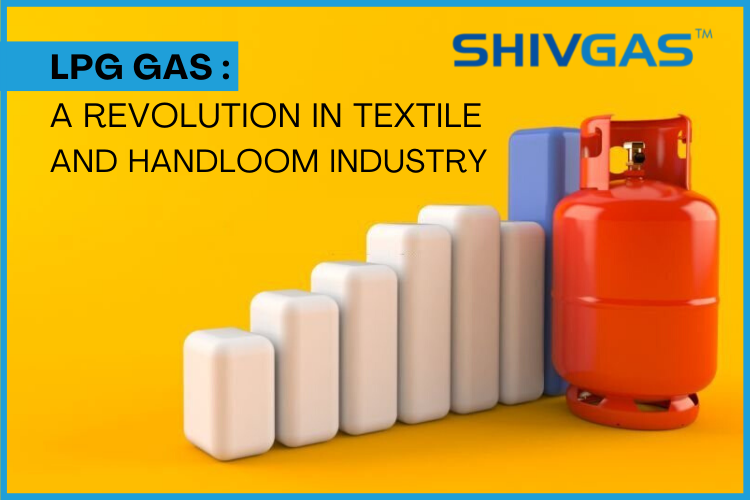
The handloom and textile industries of India are around 5000 years old! But the methods have changed a lot from olden times, and one of them is the adaptability of LPG gas. The LPG gas company in India plays a vital role in improving the working condition and efficiency of the handloom industry.
The domestic apparel and textile industry contribute 5% to the Indian GDP and 12% of export earnings. Partnering with LPG Gas Company in India, the textile industry is growing at an exponential rate.
In this enormous sector, the use of LPG is detrimental. Applications of LPG gas in the textile industry are Singeing (burning off the yarn for a better finish), calendaring, and apparel drying after dying.
There are four main steps of production of fabric in the Textile Industry:
Today, we will discuss the process of fabric making and the use of LPG in different processes.
Appropriate heat is required for drying bulks of fabric in the textile industry. Although there are other heating resources such as diesel or electric run heaters one contaminates the air, while the latter is not cost-efficient. LPG is a clean fuel with a high ignition rate that ensures, proper heat is provided in the drying machine without contaminating the air.
You May Like: Role Of LPG In The Metal Industry
Singeing is also known as gassing, applied both to yarns and fabrics to burn the fuzz. The process targets fibers and yarn end, giving a smoother texture to the fabric. The fiber is run over either a copper plate or a gas flame at a temperature sufficient to burn off any protruding material to achieve a smooth texture.
Using LPG reduces overheating risks, and prevents the fabric from getting scratched or burned.
Tenting, crabbing, and heat setting are needed to ensure the yarns do not stretch out of shape and to keep the fabrics at the right angle. While the tenter is done through the tenter frame, the main use of LPG is in the process of heat setting.
As the fabric passes through the heated chamber the creases and wrinkles are removed. The weave is straightened, and the fabric is dried to its final size.
Calendering is the final process through which heat is applied to the fabric. In this, each fabric roll goes through heated rollers that impart a flat, glossy, and shiny surface. As the rollers heat up and pressure is applied to the fabric, the luster of the fabric increases.
In the case of velvet, a flat surface is not applicable, rather LPG is used for steam generation to steam the cloth while in tension, without pressing.
The booming textile industry is fueling India's economy. The adoption of LPG in the textile industry is beneficial for lowering the costs of production and increasing efficiency. The ever-evolving industry of textiles is transitioning to better technology and methods to reduce labor-intensive processes.
The application of LPG in the textile industry ensures a healthy and safe work environment in enclosed spaces.SHIVGAS is pro in offering the highest quality LPG at reduced costs. As a private LPG gas company in India, it promotes sustainable energy and moves more and more industries towards greener fuel that is free from pollutants and impurities.
For expert advice or any queries contact us. Call us at 033-4006-6002 or mail us at info@shivgas.com.
Comment (0)